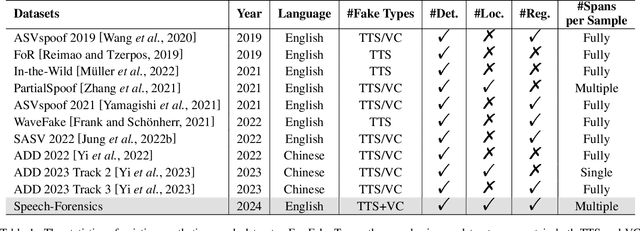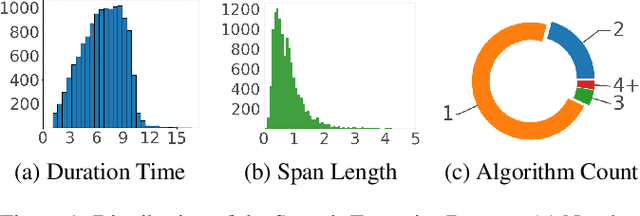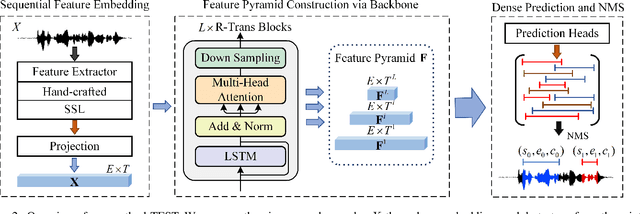Hang Wang
A Machine Learning-Based Study on the Synergistic Optimization of Supply Chain Management and Financial Supply Chains from an Economic Perspective
Sep 03, 2025Abstract:Based on economic theories and integrated with machine learning technology, this study explores a collaborative Supply Chain Management and Financial Supply Chain Management (SCM - FSCM) model to solve issues like efficiency loss, financing constraints, and risk transmission. We combine Transaction Cost and Information Asymmetry theories and use algorithms such as random forests to process multi-dimensional data and build a data-driven, three-dimensional (cost-efficiency-risk) analysis framework. We then apply an FSCM model of "core enterprise credit empowerment plus dynamic pledge financing." We use Long Short-Term Memory (LSTM) networks for demand forecasting and clustering/regression algorithms for benefit allocation. The study also combines Game Theory and reinforcement learning to optimize the inventory-procurement mechanism and uses eXtreme Gradient Boosting (XGBoost) for credit assessment to enable rapid monetization of inventory. Verified with 20 core and 100 supporting enterprises, the results show a 30\% increase in inventory turnover, an 18\%-22\% decrease in SME financing costs, a stable order fulfillment rate above 95\%, and excellent model performance (demand forecasting error <= 8\%, credit assessment accuracy >= 90\%). This SCM-FSCM model effectively reduces operating costs, alleviates financing constraints, and supports high-quality supply chain development.
VITA: Vision-to-Action Flow Matching Policy
Jul 17, 2025Abstract:We present VITA, a Vision-To-Action flow matching policy that evolves latent visual representations into latent actions for visuomotor control. Traditional flow matching and diffusion policies sample from standard source distributions (e.g., Gaussian noise) and require additional conditioning mechanisms like cross-attention to condition action generation on visual information, creating time and space overheads. VITA proposes a novel paradigm that treats latent images as the flow source, learning an inherent mapping from vision to action while eliminating separate conditioning modules and preserving generative modeling capabilities. Learning flows between fundamentally different modalities like vision and action is challenging due to sparse action data lacking semantic structures and dimensional mismatches between high-dimensional visual representations and raw actions. We address this by creating a structured action latent space via an autoencoder as the flow matching target, up-sampling raw actions to match visual representation shapes. Crucially, we supervise flow matching with both encoder targets and final action outputs through flow latent decoding, which backpropagates action reconstruction loss through sequential flow matching ODE solving steps for effective end-to-end learning. Implemented as simple MLP layers, VITA is evaluated on challenging bi-manual manipulation tasks on the ALOHA platform, including 5 simulation and 2 real-world tasks. Despite its simplicity, MLP-only VITA outperforms or matches state-of-the-art generative policies while reducing inference latency by 50-130% compared to conventional flow matching policies requiring different conditioning mechanisms or complex architectures. To our knowledge, VITA is the first MLP-only flow matching policy capable of solving complex bi-manual manipulation tasks like those in ALOHA benchmarks.
Ego-centric Learning of Communicative World Models for Autonomous Driving
Jun 09, 2025Abstract:We study multi-agent reinforcement learning (MARL) for tasks in complex high-dimensional environments, such as autonomous driving. MARL is known to suffer from the \textit{partial observability} and \textit{non-stationarity} issues. To tackle these challenges, information sharing is often employed, which however faces major hurdles in practice, including overwhelming communication overhead and scalability concerns. By making use of generative AI embodied in world model together with its latent representation, we develop {\it CALL}, \underline{C}ommunic\underline{a}tive Wor\underline{l}d Mode\underline{l}, for MARL, where 1) each agent first learns its world model that encodes its state and intention into low-dimensional latent representation with smaller memory footprint, which can be shared with other agents of interest via lightweight communication; and 2) each agent carries out ego-centric learning while exploiting lightweight information sharing to enrich her world model, and then exploits its generalization capacity to improve prediction for better planning. We characterize the gain on the prediction accuracy from the information sharing and its impact on performance gap. Extensive experiments are carried out on the challenging local trajectory planning tasks in the CARLA platform to demonstrate the performance gains of using \textit{CALL}.
GeoMM: On Geodesic Perspective for Multi-modal Learning
May 16, 2025Abstract:Geodesic distance serves as a reliable means of measuring distance in nonlinear spaces, and such nonlinear manifolds are prevalent in the current multimodal learning. In these scenarios, some samples may exhibit high similarity, yet they convey different semantics, making traditional distance metrics inadequate for distinguishing between positive and negative samples. This paper introduces geodesic distance as a novel distance metric in multi-modal learning for the first time, to mine correlations between samples, aiming to address the limitations of common distance metric. Our approach incorporates a comprehensive series of strategies to adapt geodesic distance for the current multimodal learning. Specifically, we construct a graph structure to represent the adjacency relationships among samples by thresholding distances between them and then apply the shortest-path algorithm to obtain geodesic distance within this graph. To facilitate efficient computation, we further propose a hierarchical graph structure through clustering and combined with incremental update strategies for dynamic status updates. Extensive experiments across various downstream tasks validate the effectiveness of our proposed method, demonstrating its capability to capture complex relationships between samples and improve the performance of multimodal learning models.
HCMA: Hierarchical Cross-model Alignment for Grounded Text-to-Image Generation
May 15, 2025Abstract:Text-to-image synthesis has progressed to the point where models can generate visually compelling images from natural language prompts. Yet, existing methods often fail to reconcile high-level semantic fidelity with explicit spatial control, particularly in scenes involving multiple objects, nuanced relations, or complex layouts. To bridge this gap, we propose a Hierarchical Cross-Modal Alignment (HCMA) framework for grounded text-to-image generation. HCMA integrates two alignment modules into each diffusion sampling step: a global module that continuously aligns latent representations with textual descriptions to ensure scene-level coherence, and a local module that employs bounding-box layouts to anchor objects at specified locations, enabling fine-grained spatial control. Extensive experiments on the MS-COCO 2014 validation set show that HCMA surpasses state-of-the-art baselines, achieving a 0.69 improvement in Frechet Inception Distance (FID) and a 0.0295 gain in CLIP Score. These results demonstrate HCMA's effectiveness in faithfully capturing intricate textual semantics while adhering to user-defined spatial constraints, offering a robust solution for semantically grounded image generation. Our code is available at https://github.com/hwang-cs-ime/HCMA.
IN-RIL: Interleaved Reinforcement and Imitation Learning for Policy Fine-Tuning
May 15, 2025Abstract:Imitation learning (IL) and reinforcement learning (RL) each offer distinct advantages for robotics policy learning: IL provides stable learning from demonstrations, and RL promotes generalization through exploration. While existing robot learning approaches using IL-based pre-training followed by RL-based fine-tuning are promising, this two-step learning paradigm often suffers from instability and poor sample efficiency during the RL fine-tuning phase. In this work, we introduce IN-RIL, INterleaved Reinforcement learning and Imitation Learning, for policy fine-tuning, which periodically injects IL updates after multiple RL updates and hence can benefit from the stability of IL and the guidance of expert data for more efficient exploration throughout the entire fine-tuning process. Since IL and RL involve different optimization objectives, we develop gradient separation mechanisms to prevent destructive interference during \ABBR fine-tuning, by separating possibly conflicting gradient updates in orthogonal subspaces. Furthermore, we conduct rigorous analysis, and our findings shed light on why interleaving IL with RL stabilizes learning and improves sample-efficiency. Extensive experiments on 14 robot manipulation and locomotion tasks across 3 benchmarks, including FurnitureBench, OpenAI Gym, and Robomimic, demonstrate that \ABBR can significantly improve sample efficiency and mitigate performance collapse during online finetuning in both long- and short-horizon tasks with either sparse or dense rewards. IN-RIL, as a general plug-in compatible with various state-of-the-art RL algorithms, can significantly improve RL fine-tuning, e.g., from 12\% to 88\% with 6.3x improvement in the success rate on Robomimic Transport. Project page: https://github.com/ucd-dare/IN-RIL.
Heterogeneous Decision Making in Mixed Traffic: Uncertainty-aware Planning and Bounded Rationality
Feb 25, 2025Abstract:The past few years have witnessed a rapid growth of the deployment of automated vehicles (AVs). Clearly, AVs and human-driven vehicles (HVs) will co-exist for many years, and AVs will have to operate around HVs, pedestrians, cyclists, and more, calling for fundamental breakthroughs in AI designed for mixed traffic to achieve mixed autonomy. Thus motivated, we study heterogeneous decision making by AVs and HVs in a mixed traffic environment, aiming to capture the interactions between human and machine decision-making and develop an AI foundation that enables vehicles to operate safely and efficiently. There are a number of challenges to achieve mixed autonomy, including 1) humans drivers make driving decisions with bounded rationality, and it remains open to develop accurate models for HVs' decision making; and 2) uncertainty-aware planning plays a critical role for AVs to take safety maneuvers in response to the human behavior. In this paper, we introduce a formulation of AV-HV interaction, where the HV makes decisions with bounded rationality and the AV employs uncertainty-aware planning based on the prediction on HV's future actions. We conduct a comprehensive analysis on AV and HV's learning regret to answer the questions: 1) {How does the learning performance depend on HV's bounded rationality and AV's planning}; 2) {How do different decision making strategies impact the overall learning performance}? Our findings reveal some intriguing phenomena, such as Goodhart's Law in AV's learning performance and compounding effects in HV's decision making process. By examining the dynamics of the regrets, we gain insights into the interplay between human and machine decision making.
Towards Unraveling and Improving Generalization in World Models
Dec 31, 2024Abstract:World models have recently emerged as a promising approach to reinforcement learning (RL), achieving state-of-the-art performance across a wide range of visual control tasks. This work aims to obtain a deep understanding of the robustness and generalization capabilities of world models. Thus motivated, we develop a stochastic differential equation formulation by treating the world model learning as a stochastic dynamical system, and characterize the impact of latent representation errors on robustness and generalization, for both cases with zero-drift representation errors and with non-zero-drift representation errors. Our somewhat surprising findings, based on both theoretic and experimental studies, reveal that for the case with zero drift, modest latent representation errors can in fact function as implicit regularization and hence result in improved robustness. We further propose a Jacobian regularization scheme to mitigate the compounding error propagation effects of non-zero drift, thereby enhancing training stability and robustness. Our experimental studies corroborate that this regularization approach not only stabilizes training but also accelerates convergence and improves accuracy of long-horizon prediction.
Speech-Forensics: Towards Comprehensive Synthetic Speech Dataset Establishment and Analysis
Dec 12, 2024



Abstract:Detecting synthetic from real speech is increasingly crucial due to the risks of misinformation and identity impersonation. While various datasets for synthetic speech analysis have been developed, they often focus on specific areas, limiting their utility for comprehensive research. To fill this gap, we propose the Speech-Forensics dataset by extensively covering authentic, synthetic, and partially forged speech samples that include multiple segments synthesized by different high-quality algorithms. Moreover, we propose a TEmporal Speech LocalizaTion network, called TEST, aiming at simultaneously performing authenticity detection, multiple fake segments localization, and synthesis algorithms recognition, without any complex post-processing. TEST effectively integrates LSTM and Transformer to extract more powerful temporal speech representations and utilizes dense prediction on multi-scale pyramid features to estimate the synthetic spans. Our model achieves an average mAP of 83.55% and an EER of 5.25% at the utterance level. At the segment level, it attains an EER of 1.07% and a 92.19% F1 score. These results highlight the model's robust capability for a comprehensive analysis of synthetic speech, offering a promising avenue for future research and practical applications in this field.
Research on Cervical Cancer p16/Ki-67 Immunohistochemical Dual-Staining Image Recognition Algorithm Based on YOLO
Dec 02, 2024



Abstract:The p16/Ki-67 dual staining method is a new approach for cervical cancer screening with high sensitivity and specificity. However, there are issues of mis-detection and inaccurate recognition when the YOLOv5s algorithm is directly applied to dual-stained cell images. This paper Proposes a novel cervical cancer dual-stained image recognition (DSIR-YOLO) model based on an YOLOv5. By fusing the Swin-Transformer module, GAM attention mechanism, multi-scale feature fusion, and EIoU loss function, the detection performance is significantly improved, with mAP@0.5 and mAP@0.5:0.95 reaching 92.6% and 70.5%, respectively. Compared with YOLOv5s in five-fold cross-validation, the accuracy, recall, mAP@0.5, and mAP@0.5:0.95 of the improved algorithm are increased by 2.3%, 4.1%, 4.3%, and 8.0%, respectively, with smaller variances and higher stability. Compared with other detection algorithms, DSIR-YOLO in this paper sacrifices some performance requirements to improve the network recognition effect. In addition, the influence of dataset quality on the detection results is studied. By controlling the sealing property of pixels, scale difference, unlabelled cells, and diagonal annotation, the model detection accuracy, recall, mAP@0.5, and mAP@0.5:0.95 are improved by 13.3%, 15.3%, 18.3%, and 30.5%, respectively.
 Add to Chrome
Add to Chrome Add to Firefox
Add to Firefox Add to Edge
Add to Edge